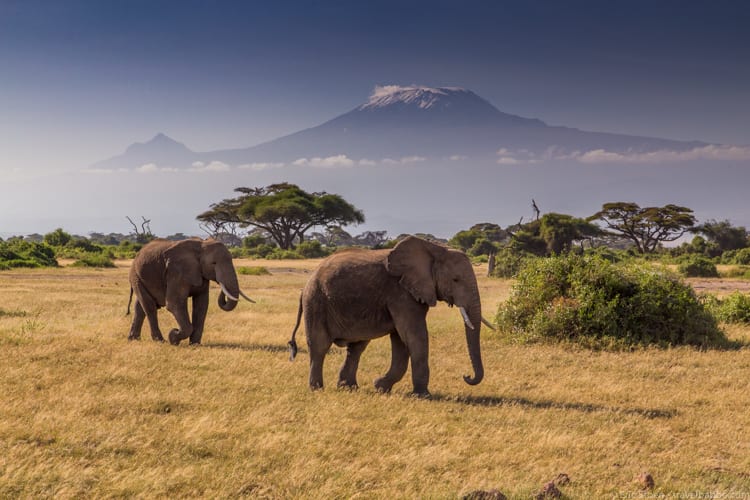Frequent Flyer Miles
My relationship with frequent flyer miles, or points, changed forever around 6pm on February 16, 1999. Up until then, I hadn’t paid much attention to my airline-based mileage accounts. I flew internationally once or twice a year, and had a mileage earning credit card, but never thought about my account balances or the travel possibilities. That cold and dark February night I was working late and Lenny Kravitz’ Fly Away came on the radio. I glanced outside and thought: I need to fly away! And I need to fly away to somewhere that’s the opposite of Colorado in February – somewhere sunny and warm.
I immediately thought of Australia. Opposite hemisphere. Summer. And then I thought about my frequent flyer points. I went home, found my most-recent paper statement, and saw that yes, I had enough miles to get to Australia. I booked a ticket immediately and flew down a week later, stopping in New Zealand first before traveling on to Melbourne and Sydney.
That trip opened my eyes to the possibilities of frequent flyer miles/points. After all, a last-minute ticket would have been expensive, and I was able to travel to two new countries – and a new continent – for free. I immediately started maximizing my mileage earnings. I did some mileage runs – flights where the value of the miles exceeded the price of the ticket – but really I changed my spending habits. I started charging absolutely everything possible to my mileage earning credit card, including my company’s large monthly telephone bills.
Before I knew it, I was traveling all over for free using frequent flyer points. China. Thailand. Several trips to Africa with friends. And I’ve kept going after getting married and having kids. Mileage runs are no longer feasible, as most airlines now tie mileage earnings to ticket prices, but my kids and my wife and I all have several frequent flyer accounts (at least one with an airline in each major alliance), and we get miles for everything that we charge.
What has changed is how we spend my frequent flyer points. I used to be perfectly happy redeeming miles for international economy class tickets. I just wanted to travel for free! Now we redeem miles for international business class tickets, and use miles for upgrades, as business class bookings and upgrades generally offer the best value.
If all of this still seems foreign, and you have a lot of questions after reading this opening, don’t worry! Here are my top tips for benefiting from frequent flyer points as well.
Look at Your Travel Wish List
You’re going to want to set up frequent flyer accounts with the right airlines to meet your needs. So how do you choose?
First, where do you live? What airlines are convenient for you, or what airlines do you already fly on?
Second, where do you want to go? This is important. There are three large airline alliances: Oneworld; SkyTeam; and Star Alliance. You can travel practically anywhere in the world within any of the alliances, but some are stronger than others in different regions and specific countries. As I mentioned above, we all have at least one frequent flyer account in each alliance. You just don’t want a lot more accounts than that. It’s good to have enough accounts so that you’re earning miles with every flight and consolidating them to some extent, but if you have too many accounts open it’s going to be harder to build up enough miles in any of them to earn free travel.
And don’t limit yourself to domestic carriers. If your goal is to travel to Europe, a frequent flyer account with a European carrier could make the most sense. And if an airline is part of an alliance, you’ll be able to book tickets using their miles even on routes that they don’t fly – e.g. with a Cathay Pacific frequent flyer account you can book award tickets on any other Oneworld airline (subject to availability).
Earn Miles Everywhere You Can
Of course you’ll earn miles and points from flying, but on an everyday basis, nothing beats having a mileage-earning credit card. The best card for you is the one that gets you points/miles on your preferred airline, or one that consolidates points that are transferable to your favorite airline. Some places to look for a card:
- The best cards right now
- The best cards that earn United miles (the best airline for our international flying)
- The best cards that earn Southwest points (love Southwest!)
- The cards with the best signup offers right now
The most popular card out there right now is the Chase Sapphire Preferred®. The card has a great signup offer, the annual fee is only $95/year, it gets you extra points for travel, groceries, streaming, dining and more, and there are no foreign transaction fees. I’ve had this card for a decade, along with many others! Note: all card benefits are subject to change.

Maximize the Value of Your Miles
For me, the key to redeeming frequent flyer points is to calculate what they’re worth, and then make decisions accordingly. Some examples:
- A few years ago for spring break we were planning on traveling from Los Angeles to Santiago, Chile. And because it was an overnight flight, I wanted to travel in business class. The tickets were pricing at $4,200 each. But I was able to get five tickets for 110,000 miles each. 4,200/110,000 = $0.038/mile.
- Last year I needed to fly to Berlin for a conference. Business class tickets for the exact dates I wanted to travel were $5,600, but I was able to get a ticket using 140,000 miles. 5,600/140,000 = $0.04/mile.
Economy class tickets generally don’t offer the same value, but they also require fewer miles.
- Last January my daughter and I flew to Colorado to go skiing. Tickets were $363 each, or $726 total. Instead I redeemed 59,000 miles. 726/59,000 = $0.012/mile. That’s not a great value, but there’s a chance that we’ll need to cancel the trip. With my airline status, if we cancel I can get the miles refunded to me with no penalty. So the flexibility makes it worth the lower value. If I paid for the tickets, I could get a future travel credit upon cancellation, but I wouldn’t get my money back.
- A typical ticket from the US to Italy and back on United, in July 2024, is 80,000 miles. Looking at non-budget-airline fares for random dates in July, tickets average $1,300 from Los Angeles to Rome. 1,300/80,000 = $0.016/mile.
Or split the difference. We’ll often book business class for the overnight portion of an itinerary (e.g. flying to Europe) but economy class back.
- Last year I booked two tickets from Los Angeles to Florence, Italy and back for 110,000 miles each – half in business and half in coach. The tickets were pricing at $2,800 each. 2,800/110,000 = $0.025/mile.

There’s really no precise formula. Everyone needs to determine the value that he/she wants to get from a ticket. But there would rarely be a reason to get less than $0.01/mile in value. Note: when determining value, remember that frequent flyer tickets also have taxes and fees, and they don’t earn miles.
Get Bonus Points through Airline Hotel Portals
I’ve sacrificed so many miles over the years by not booking every hotel though airline portals! Just this year, through the Southwest Airlines Hotel site, I’ve gotten 26,000 Rapid Rewards points for booking our New York hotel and another 12,000 for booking a Portland hotel. That’s 38,000 points for booking hotels at the same prices that I would have gotten through other online sites or by booking direct. Other airlines have hotel portals as well – just Google them.

Be Flexible!
I’m proof that it’s possible to fly all over the world using frequent flyer points. We’ve earned, and redeemed, millions of miles over the years. The earning is the easy part. Get a credit card like Chase Sapphire Preferred where you get points for every purchase, and take advantage of promotions as well. A few times a year there’s a transfer bonus of 1.3x for converting Chase Ultimate Rewards (UR) points to British Airlines Avios. I don’t love BA, but I do love Qatar Airways, and the two airlines both use Avios. So I’ll transfer, for example, 200,000 UR points to British Airways with a 30% bonus, getting 260,000 Avios. Then I’ll immediately move them to my Qatar account and redeem them for QSuite business class tickets.
Note: this 30% bonus happens a few times a year. I find out about current transfer bonuses through the Daily Drop newsletter (free and highly-recommended if you want to maximize your points strategy).
I’d love to hear from you! What’s the best value you’ve gotten from your frequent flyer points /frequent flier miles? And do you have tips that I haven’t included?














I have a question/ comment. I’ve loved into points and such but it just seems like such a shell game. Basically I spend a bunch of money to get points and fly “free”? And perhaps there are ways to minimize this, but the amount of effort doesn’t seem to match the reward. I just don’t get it.
You want to get points for doing things that you’re already doing, like buying gas and groceries and paying your utilities bill, and not pay more than the miles are worth. If you can earn 98,000 miles in a year (50,000 card bonus and 48,000 for spending $2,000/month), those are worth at least $980 – and potentially a lot more if you’re transferring them to an airline frequent flier account. That makes a $90 annual fee worthwhile. And when there are promotions like hotels.com/venture, I’m earning 100,000 miles for spending $10,000 on hotels in a year. I’d be spending that anyway (we travel A LOT), so I may as well be earning free travel at the same time.
Of course there’s also the game side of it. The best example is the pudding guy (https://gizmodo.com/how-an-engineer-earned-1-25-million-air-miles-by-buying-1339646546). People are always trying to figure out how to obtain miles for less than they’re worth, and they’re willing to put in a lot of effort to do it. But you don’t have to do that if you don’t want to. Just have a card that earns miles and charge everything you can and it won’t be a shell game, as long as you’re not spending more than you would anyway.